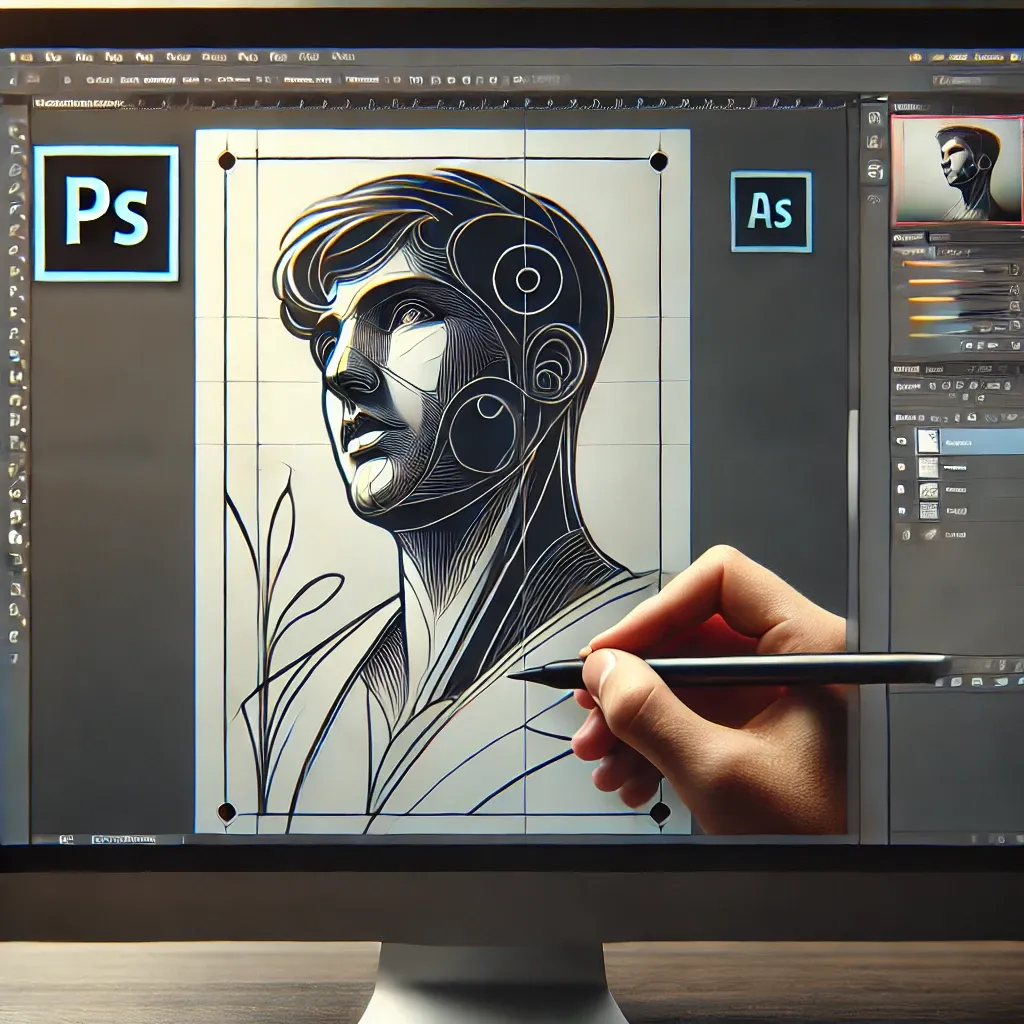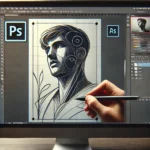Are you interested in mastering Photoshop? Do you want to learn how the Pen Tool can help with detailed designs? In this article, we’ll explore three key features: the Photoshop Pen Tool, Photoshop Line Drawing, and Photoshop Selection Area, and how they can transform your design process.
Photoshop Pen Tool: A Designer’s Best Friend
The Photoshop Pen Tool is one of the most powerful features in Adobe Photoshop, offering a precise way to create paths and curves for high-quality graphic designs. It’s widely used by professionals in industries such as digital art, web design, and illustration. But why is the Pen Tool so special?
-
Precision The Pen Tool allows designers to create paths with extreme accuracy, making it perfect for vector-based artwork and detailed designs.
-
Versatility Whether you’re drawing straight lines, curves, or complex shapes, the Pen Tool adapts to all kinds of tasks.
-
Editing Flexibility Once a path is drawn, it can be easily modified using anchor points and direction handles, giving designers total control over the design.
-
Compatibility It integrates smoothly with other Photoshop tools, allowing for seamless workflow between drawing, coloring, and shading.
-
Efficiency By converting your shapes into paths, you can create scalable designs without losing quality.
Practical Example of the Pen Tool
For example, let’s say you’re designing a logo. You might start with simple geometric shapes, but as you refine the logo’s details, the Pen Tool becomes essential. You can curve lines around corners to form smooth, continuous paths. Once your path is set, you can use it to fill in colors or add effects, knowing that it will scale perfectly on any medium.
Click here to learn more about using the Photoshop Pen Tool.
Photoshop Line Drawing: Bringing Art to Life
Photoshop Line Drawing is the foundation of many types of digital artwork, from sketches to detailed designs. Using Photoshop’s advanced brush tools combined with the Pen Tool, artists can create sharp, crisp lines that bring their ideas to life.
-
Smooth Strokes With the right settings, Photoshop can create lines that are smooth and fluid, mimicking traditional drawing techniques.
-
Layering Line drawings can be placed on separate layers, making it easy to edit or refine individual elements without affecting the entire artwork.
-
Pressure Sensitivity If you’re using a drawing tablet, Photoshop can respond to pressure changes, enabling thicker or thinner strokes based on your pen’s pressure.
-
Dynamic Brushes Photoshop offers a variety of brushes that can be used to create everything from fine lines to bold strokes. You can even create custom brushes for unique effects.
-
Grid and Ruler Assistance When precision is key, using Photoshop’s grid and ruler tools helps create straight, consistent lines for professional results.
Real-World Example: From Sketch to Digital
When sketching for a comic book, the artist begins with rough pencil sketches. After scanning the images into Photoshop, they use the Line Drawing tool to trace over their sketches, turning them into clean, polished lines. This process creates sharp edges, which are essential for print-ready artwork.
Click here for more tips on Photoshop Line Drawing techniques.
Photoshop Selection Area: Mastering Selections for Perfect Edits
The Photoshop Selection Area tool is essential for isolating specific parts of an image to modify them without affecting the rest. Whether you’re cutting out a subject or adjusting only part of an image, mastering this tool is vital for efficiency and precision.
-
Lasso Tool The Lasso allows you to freely select an area of any shape, perfect for intricate selections.
-
Magic Wand Tool Ideal for selecting areas of similar color, this tool is perfect for simple, uniform areas in your design.
-
Quick Selection Tool This tool lets you paint over the area you want to select, and it automatically detects edges, making the process much faster.
-
Refine Edge This option allows for fine-tuning your selection, especially useful for selections involving hair or complex edges.
-
Feathering This softens the edges of your selection, ensuring smooth transitions when applying changes.
Real-World Example: Removing a Background
Imagine you want to remove the background from a portrait photo. You can use the Quick Selection Tool to outline the subject. Once selected, you can refine the edge, and remove the background, leaving the subject ready to be placed on a new background. With the right selection techniques, this can be done quickly and with great precision.
Click here to learn more about mastering the Photoshop Selection Area.
Conclusion
In this article, we’ve covered three essential tools in Photoshop: the Pen Tool, Line Drawing, and Selection Area. These tools give designers the power to create detailed, scalable, and editable artwork with precision. Whether you’re working on logo design, digital art, or photo editing, mastering these features will significantly improve your workflow. Keep practicing, and soon, Photoshop will feel like second nature.






